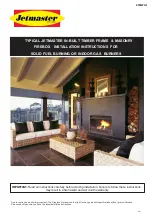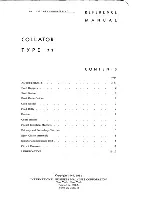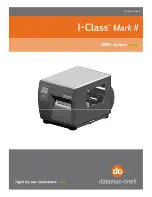
Instructions for Use
– SCHMIDT
®
Flow Sensor SS 20.500
Page 11
Mounting in ducts with rectangular cross-section
In most applications it is a room or chamber with a square flow through
cross-section. Based on flow conditions there is a distinguishment be-
tween two cases:
Quasi-uniform flow field
The lateral dimensions of the flow guiding system are approximately
as large as its length in flow direction and flow velocity is relatively
small so that a laminar trapezoidal
10
speed profile of the flow is
formed. The width of the flow gradient zone at the wall is negligible
relatively to chamber width so that a constant flow velocity can be
assumed over the whole chamber cross-section. The sensor must be
mounted here in such a way that its sensor tip is far enough from the
wall and it measures in the area with constant flow field.
Typical applications are:
o
Flow box
o
Clean room
Quasi-parabolic flow profile
The system length is large compared to the cross-section surface and
flow velocity is so high that the ratios correspond to that of a circular
pipe. This means that the same requirements apply here to installa-
tion conditions.
Since the situation is similar to that in a pipe
11
, the volumetric flow in
a square chamber can be calculated by equating the hydraulic diam-
eter of both cross-sections. As a result, the rectangle according to
Figure 3-4 equals to a pipe with the hydraulic diameter D
H
:
𝐷
𝐻
=
2 ∙ 𝑏 ∙ ℎ
𝑏 + ℎ
Figure 3-4
10
A uniform flow field prevails in the largest part of the room cross-section.
11
Profile factors are equal for both cross-section shapes.












































